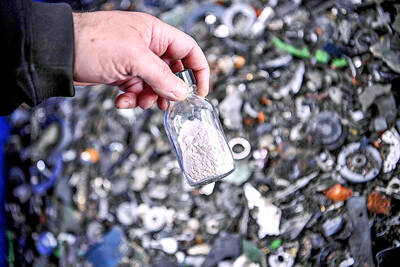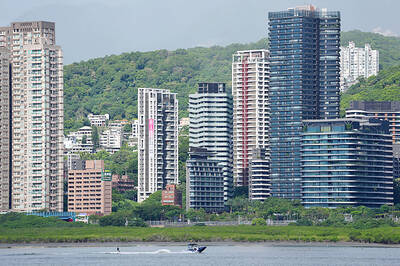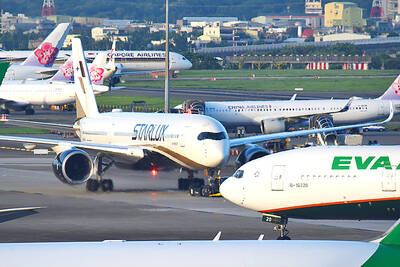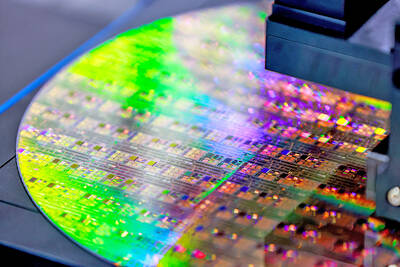Brazil’s central bank said on Friday it would ease banks’ reserve requirements, freeing up US$13 billion to stimulate lending and boost an economy facing its fourth consecutive year of sluggish growth.
The new measures, which would also loosen the rules on lending to small businesses, come as Brazilian President Dilma Rousseff looks to into October elections in which she is seeking a second four-year term.
“The central bank decided to adopt measures to improve the distribution of liquidity in the economy,” the bank said.
It attributed the move to “recent moderation in credit concessions, relatively low levels of default and the reduction of risk levels in the financial system.”
It said there was extra room for maneuver because total reserves in the banking system had risen from around US$87 billion in 2009 to nearly US$182 billion now, including a US$22.4 billion increase in the past 12 months.
Under the new rules, banks would be allowed to use up to 50 percent of reserves for credit operations, new loans and diversified investment portfolios.
The central bank also changed the way it calculates the reserves banks must hold to cover their outstanding loans, basing the amount on the number of payments remaining rather than the total term of the loan.
That could free up an additional US$6.7 billion, officials estimated.
Rules for lending to the small business sector were also eased.
Brazil’s economy registered a growth rate of 7.5 percent in 2010, the year Rousseff was elected to replace her popular predecessor and mentor, former Brazilian president Luiz Inacio Lula da Silva.
However, the economy has since cooled, growing just 2.7 percent in 2011, 1 percent in 2012 and 2.5 percent last year.
Analysts forecast growth of 1 percent this year, with only a minor, temporary boost from hosting the FIFA World Cup, this month and last month.
The central bank is meanwhile fighting to contain rising prices.
Annual inflation came in at 6.52 percent last month, breaking the government’s target ceiling of 6.5 percent. The bank has tried to tame prices by increasing the benchmark interest rate to 11 percent.
However, the new stimulus measures is likely to increase inflation.
“We are seeing contradictory messages from the central bank. On the one hand, they are keeping interest rates high, but on the other hand they are freeing up liquidity,” said Andre Perfeito, the chief economist at investment firm Gradual Investimentos.
The plan could also backfire, he added.
“It’s not so easy. We’ll see if banks want to lend more money or if families and companies want to take it. Business and consumer confidence levels are low,” he said.

RECYCLE: Taiwan would aid manufacturers in refining rare earths from discarded appliances, which would fit the nation’s circular economy goals, minister Kung said Taiwan would work with the US and Japan on a proposed cooperation initiative in response to Beijing’s newly announced rare earth export curbs, Minister of Economic Affairs Kung Ming-hsin (龔明鑫) said yesterday. China last week announced new restrictions requiring companies to obtain export licenses if their products contain more than 0.1 percent of Chinese-origin rare earths by value. US Secretary of the Treasury Scott Bessent on Wednesday responded by saying that Beijing was “unreliable” in its rare earths exports, adding that the US would “neither be commanded, nor controlled” by China, several media outlets reported. Japanese Minister of Finance Katsunobu Kato yesterday also

Taiwan’s rapidly aging population is fueling a sharp increase in homes occupied solely by elderly people, a trend that is reshaping the nation’s housing market and social fabric, real-estate brokers said yesterday. About 850,000 residences were occupied by elderly people in the first quarter, including 655,000 that housed only one resident, the Ministry of the Interior said. The figures have nearly doubled from a decade earlier, Great Home Realty Co (大家房屋) said, as people aged 65 and older now make up 20.8 percent of the population. “The so-called silver tsunami represents more than just a demographic shift — it could fundamentally redefine the

China Airlines Ltd (CAL, 中華航空) said it expects peak season effects in the fourth quarter to continue to boost demand for passenger flights and cargo services, after reporting its second-highest-ever September sales on Monday. The carrier said it posted NT$15.88 billion (US$517 million) in consolidated sales last month, trailing only September last year’s NT$16.01 billion. Last month, CAL generated NT$8.77 billion from its passenger flights and NT$5.37 billion from cargo services, it said. In the first nine months of this year, the carrier posted NT$154.93 billion in cumulative sales, up 2.62 percent from a year earlier, marking the second-highest level for the January-September

Businesses across the global semiconductor supply chain are bracing themselves for disruptions from an escalating trade war, after China imposed curbs on rare earth mineral exports and the US responded with additional tariffs and restrictions on software sales to the Asian nation. China’s restrictions, the most targeted move yet to limit supplies of rare earth materials, represent the first major attempt by Beijing to exercise long-arm jurisdiction over foreign companies to target the semiconductor industry, threatening to stall the chips powering the artificial intelligence (AI) boom. They prompted US President Donald Trump on Friday to announce that he would impose an additional